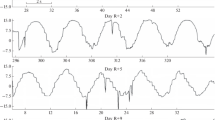Summary
In 1996 the new European Flight Crew Medical Requirements were finalized. The ophthalmological changes compared to the existing German standards range from the organization of evaluations to the necessary frequency of examinations. They also cover different examination techniques and different criteria for fitness. The changes in the requirements for ophthalmological fitness primarily affect ametropia, anisometropia, color vision and phoria. Knowledge of the European requirements is very important to advise pilots and any patient interested in becoming a pilot.
Zusammenfassung
1996 erschienen die neuen europäischen Flugtauglichkeitsrichtlinien, die am 1. 7. 1999 in Kraft treten sollen. Die neuen europäischen Richtlinien weisen sowohl Veränderungen in Bezug auf die Untersuchungseinrichtungen, die Untersuchungsintervalle, die Untersuchungsmethoden, als auch bezüglich der Tauglichkeitskriterien auf. Die Zeiträume der notwendigen augenärztlichen Untersuchungen werden verlängert. Die Veränderungen bezüglich Tauglichkeit oder Untauglichkeit betreffen vorwiegend die Ametropien, die Anisiometropien, die Farberkennung und die Phorien. Die Kenntnis der Europäischen Tauglichkeitsrichtlinien ist für die Beratung der Piloten und Pilotenanwärtern von außerordentlicher Wichtigkeit.
Similar content being viewed by others
Author information
Authors and Affiliations
Rights and permissions
About this article
Cite this article
Stern, C., Kuklinski, P. The new european flight crew medical requirements and their implications for the ophthalmologist. Ophthalmologe 95, 776–780 (1998). https://doi.org/10.1007/s003470050352
Published:
Issue Date:
DOI: https://doi.org/10.1007/s003470050352




